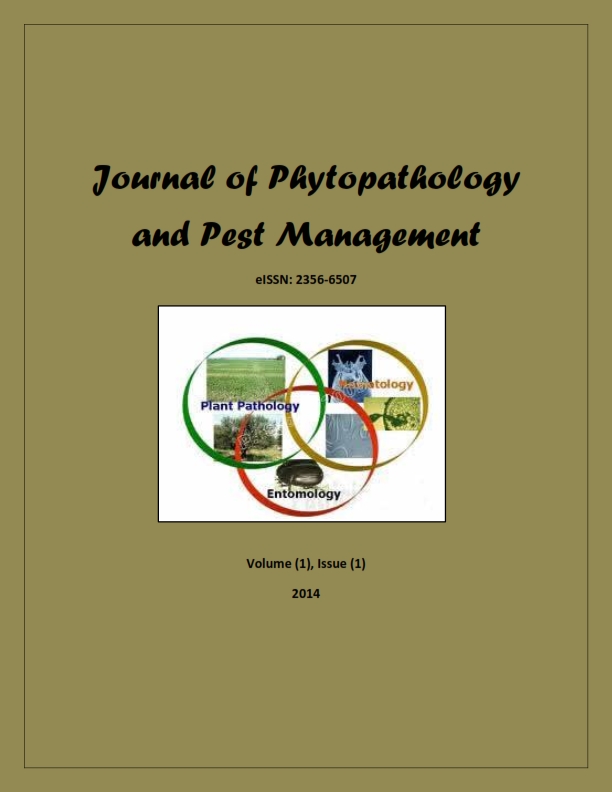Biocontrol of cantaloupe damping-off disease caused by Fusarium semitectum by using formulations of antagonistic fungi
Keywords:
Damping-off, cantaloupe, Trichoderma spp, Fusarium semitectum, F. concolar formulationAbstract
Antagonistic capability of 19 isolates of fungi isolated from rizosphere of cantaloupe plants was tested in vitro against growth of Fusarium semitectum isolate the causal pathogen of damping- off of cantaloupe. Trichoderma viride (isolate no. 17), T. harzianum (isolate no. 19) and Fusarium concolar  (isolate no.4) showed significant  percentage of inhibition against  to F. semitectum. The effect of carrier formulations of antagonistic fungi (talc based powder and rice bran) on damping-off of cantaloupe were tested under greenhouse and field conditions. In greenhouse experiments, application of antagonistic fungi with rice bran formulation two weeks before planting caused the highest percentage of survival plants in pre and post damping-off (83.33 and 75%, respectively), whereas application of talc based powder formulation significantly increased percentage of plant survival at the time of planting in pre and post damping-off (91.67 and 75%, respectively). In field experiments, application of tested formulations of antagonistic fungi to infested soil with F. semitectum two weeks before planting resulted in higher percentage of plant survival in pre and post damping-off in both tested
Metrics

Downloads
Published
How to Cite
Issue
Section
License
Authors who publish with Journal of Phytopathology and Disease Management agree to the following terms:
- Authors retain copyright and grant the journal right of first publication with the work simultaneously licensed under a Creative Commons Attribution License that allows others to share the work with an acknowledgement of the work's authorship and initial publication in this journal.
- Authors retain copyright and grant the journal right of first publication with the work simultaneously licensed under the Creative Commons Attribution-Non Commercial License (CC BY-NC). This allows others to share the work with an acknowledgement of the work's authorship and initial publication in this journal.
- Archives of Agricultural Sciences Journal is an Open Access Journal, and articles published are distributed under the terms of the Creative Commons Attribution-Non Commercial License (CC BY-NC). Readers may copy, distribute, and display the work for non commercial purposes with the proper citation of the original work. However, the journal retains the right to exploit subsidiary rights on behalf of the authors.
- Authors are able to enter into separate, additional contractural arrangements for the non-exclusive distribution of the journal's published version of the work (e.g. post it to an institutional repository or publish it in a book), with an acknowledgement of its initial publication in this journal.
- Authors are permitted and encouraged to post their work online (e.g., in institutional repositories or on their website) prior to and during the submission process with full disclosure to the journal, as it can lead to productive exchanges, as well as earlier and greater citation of published work. Following publication in Archives of Agricultural Sciences Journal, the author should update the repository, and include a citation and link to the published work.
Click here for more information on Licensing policy
.png)




